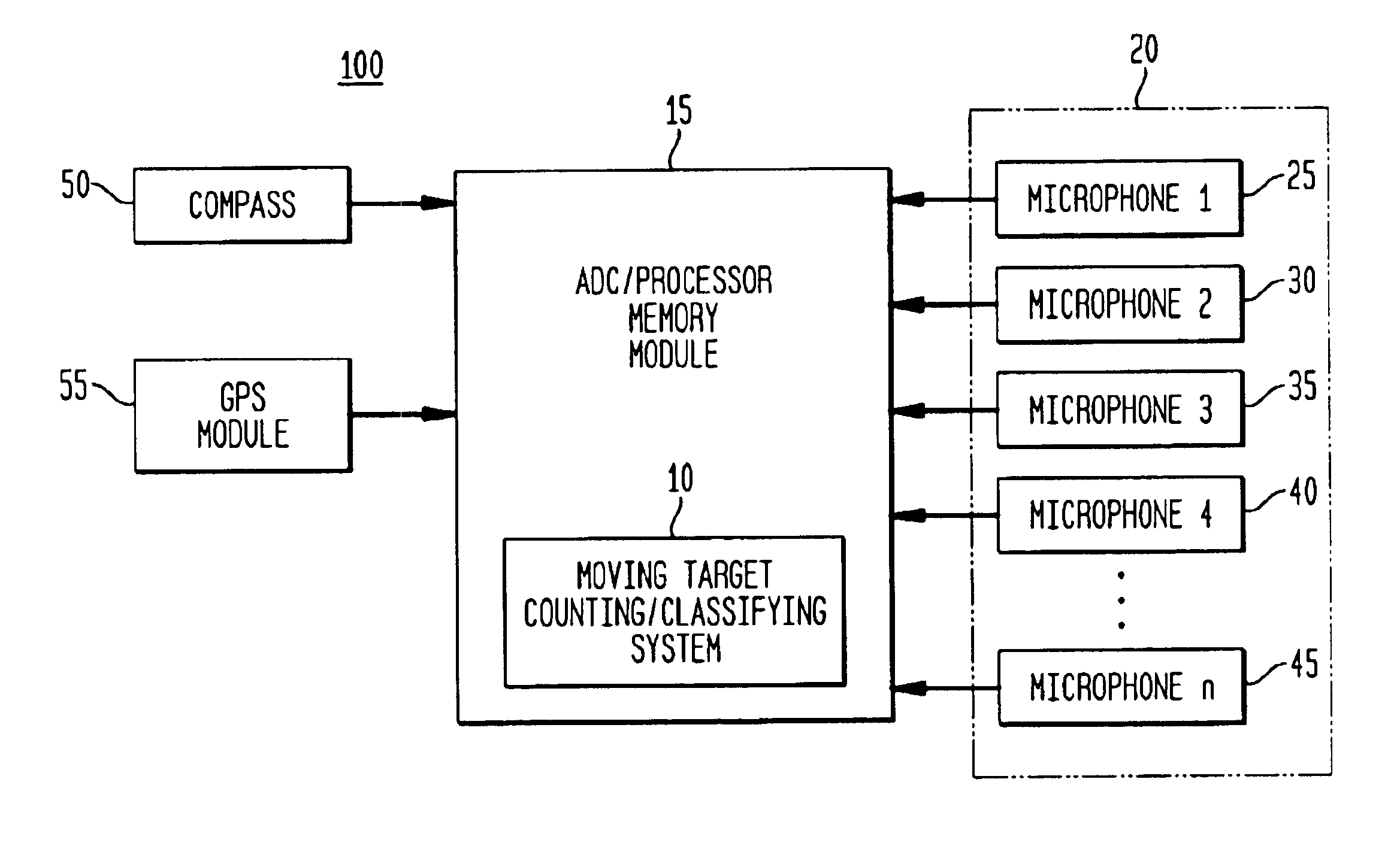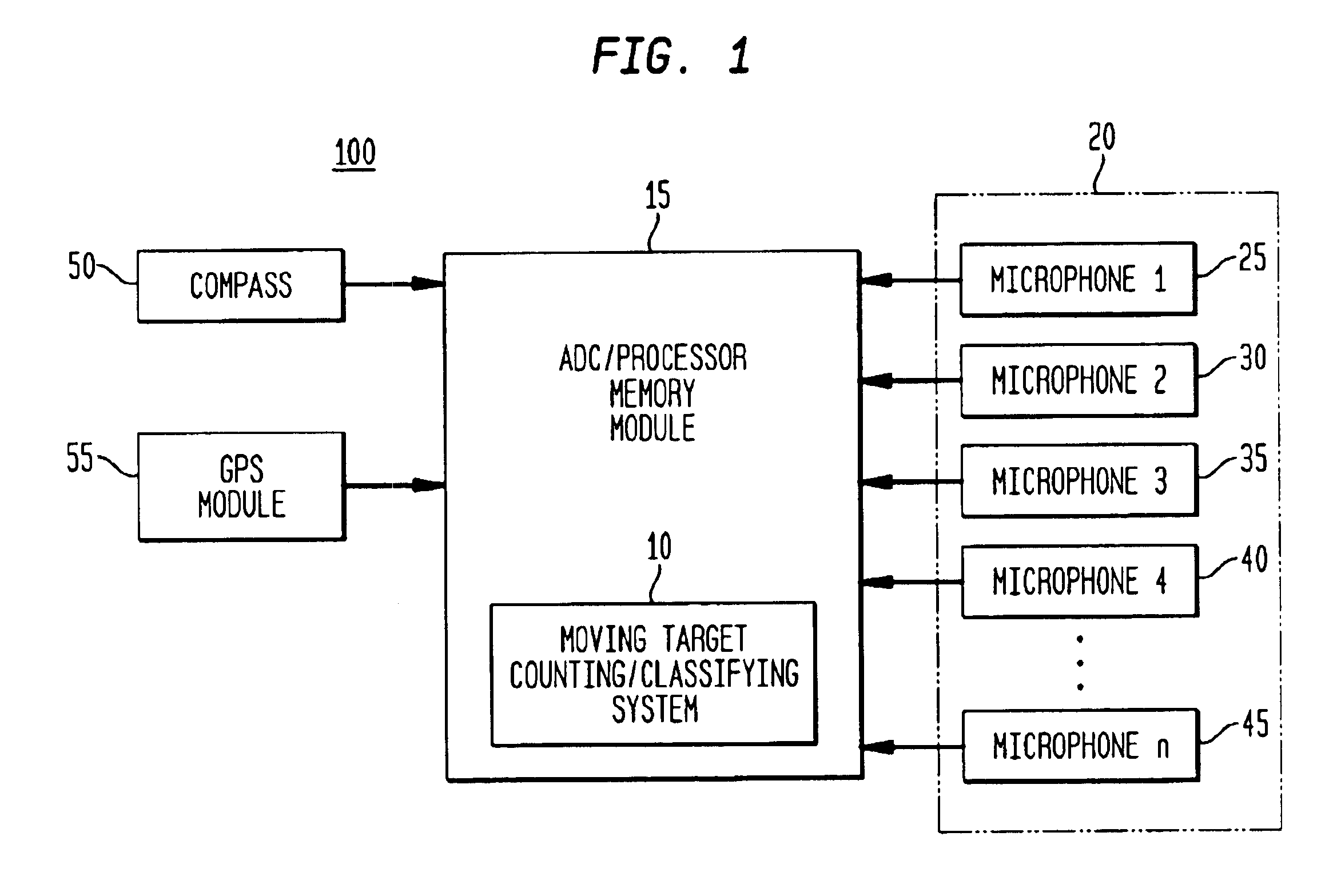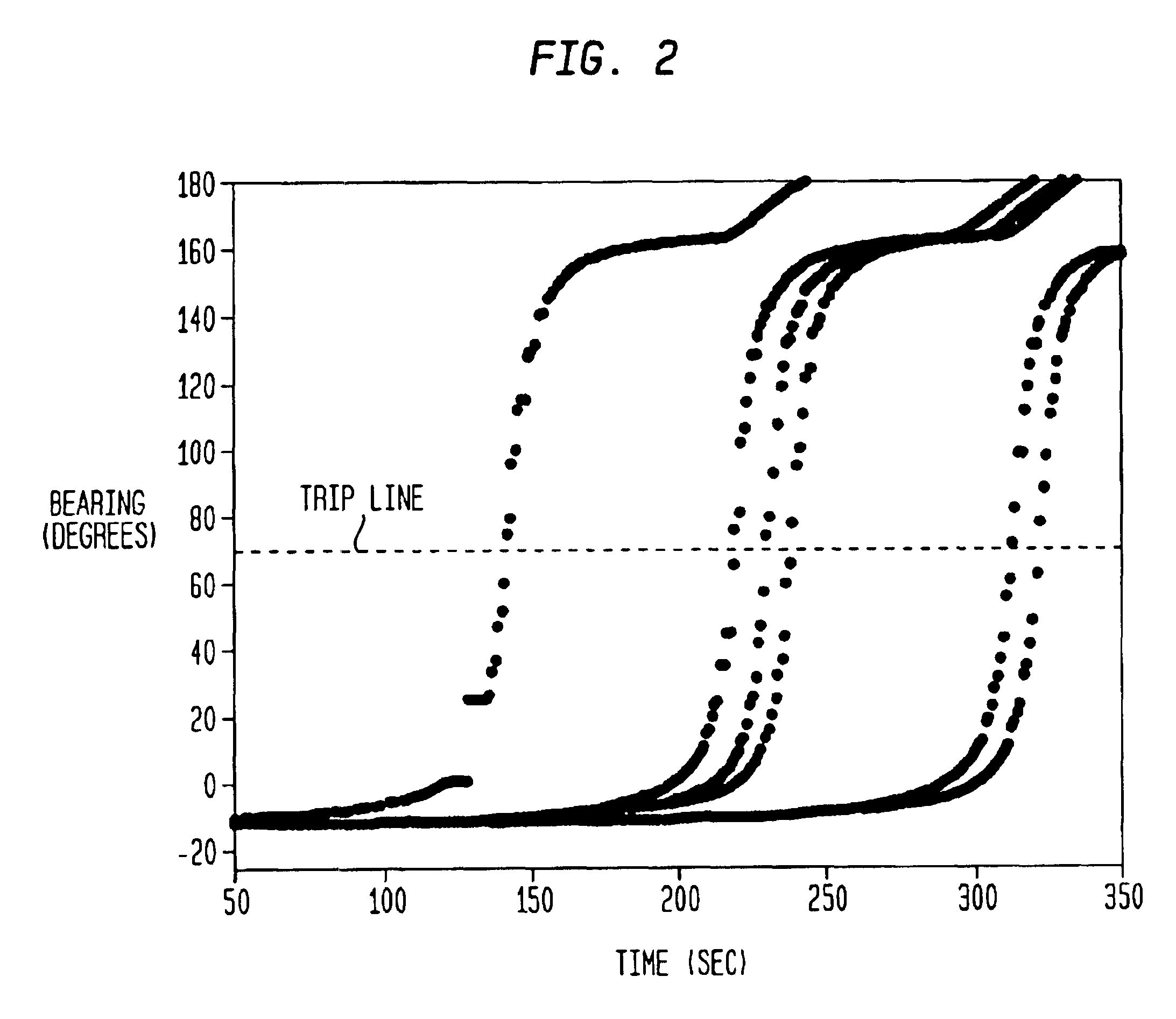Method for detecting extended range motion and counting moving objects using an acoustics microphone array
a technology of acoustic microphone array and acoustic microphone, which is applied in the direction of direction finders, instruments, systems with undesired wave elimination, etc., can solve the problems of confusion, complex data association logic is required to sort, and noisy, and achieves high-quality vehicle counting, reducing (and often canceling) the effects of interfering signals
- Summary
- Abstract
- Description
- Claims
- Application Information
AI Technical Summary
Benefits of technology
Problems solved by technology
Method used
Image
Examples
Embodiment Construction
[0029]FIG. 1 illustrates an exemplary high-level architecture of an acoustic sensor system comprising a moving target counting system 10 that utilizes an algorithm for detecting extended range motion and counting moving objects using an acoustics microphone array. System 10 includes a software programming code or computer program product that is typically embedded within, or installed on an Analog to Digital Converter (ADC) / Processor memory module 15. The microphone array 20 comprises a set of microphones such as microphone 1—(#25), microphone 2—(#30), microphone 3—(# 35), microphone 4—(#40), up to and including microphone n—(# 45). The microphone array 20 provides acoustic information to system 10 for detecting, tracking, counting and classifying targets. The compass 50 and GPS module 55 also provide information to the system 10 for location and steering purposes.
[0030]An acoustic sensor system can be used to perform direction finding using a fixed array strategy to optimize the fi...
PUM
 Login to View More
Login to View More Abstract
Description
Claims
Application Information
 Login to View More
Login to View More - R&D
- Intellectual Property
- Life Sciences
- Materials
- Tech Scout
- Unparalleled Data Quality
- Higher Quality Content
- 60% Fewer Hallucinations
Browse by: Latest US Patents, China's latest patents, Technical Efficacy Thesaurus, Application Domain, Technology Topic, Popular Technical Reports.
© 2025 PatSnap. All rights reserved.Legal|Privacy policy|Modern Slavery Act Transparency Statement|Sitemap|About US| Contact US: help@patsnap.com



